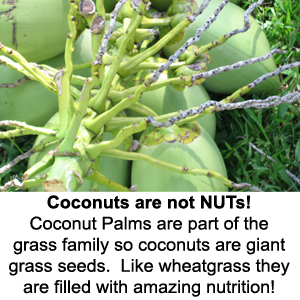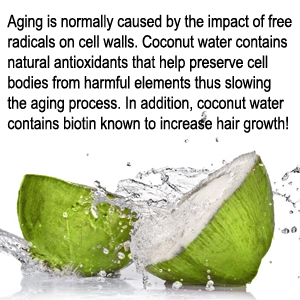 The scientific name for coconut is Cocos nucifera.
The scientific name for coconut is Cocos nucifera.
Early Spanish explorers called it coco, which means “monkey face” because the three indentations (eyes) on the mature brown nut make it look like the head and face of a monkey. Nucifera means “nut-bearing.” The coconut palm is not a tree. It is actually in the grass family. The coconut is a giant grass seed! Read more about the magical plant we call the Coconut Palm.
The coconut provides a nutritious source of meat, juice, milk, and oil that has fed and nourished populations around the world for generations. See the Coconut Nutrition page for more information.
On many islands coconut is a staple in the diet and provides the majority of the food eaten. Nearly one third of the world’s population depends on coconut to some degree for their food, medicine and their economy.
Among these cultures the coconut has a long and respected history.
Coconut is highly nutritious and rich in fiber, vitamins, and minerals. It is classified as a “functional food” because it provides many health benefits beyond its nutritional content.
Coconut oil is of special interest because it possesses healing properties far beyond that of any other dietary oil and is extensively used in traditional medicine among Asian and Pacific populations. See our Coconut Medicine Page for more information.
Pacific Islanders consider coconut oil to be the cure for all illness. The coconut palm is so highly valued by them as both a source of food and medicine that it is called “The Tree of Life.” Only recently has modern medical science unlocked the secrets to coconut’s amazing healing powers. See our Coconut Medicine Page for more information.



